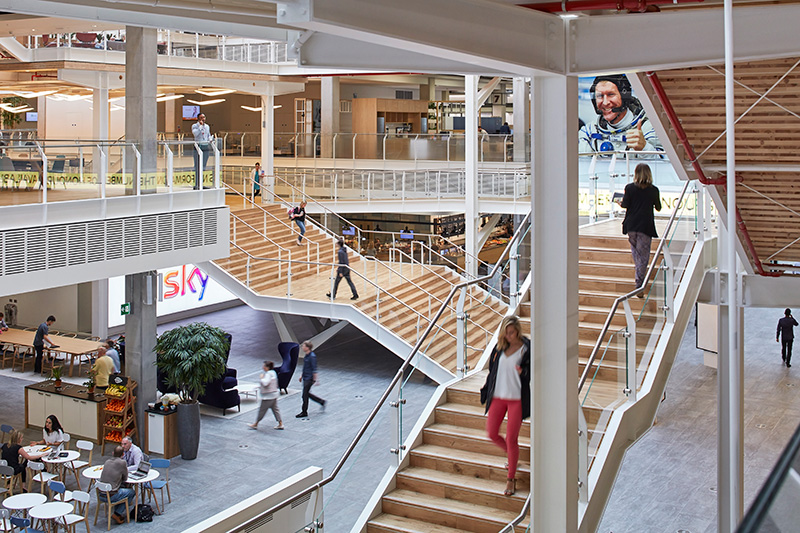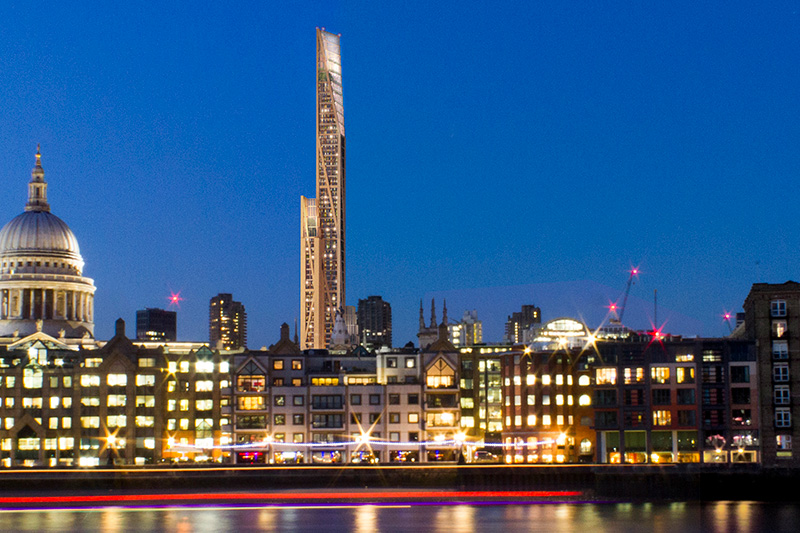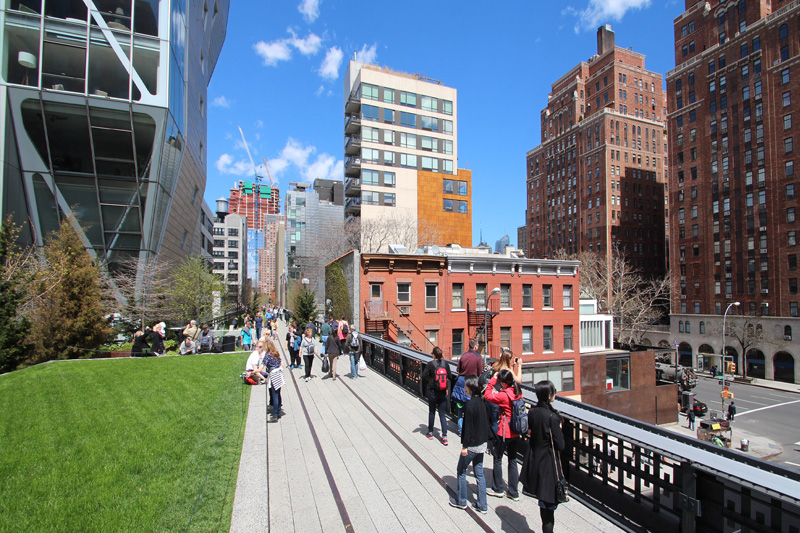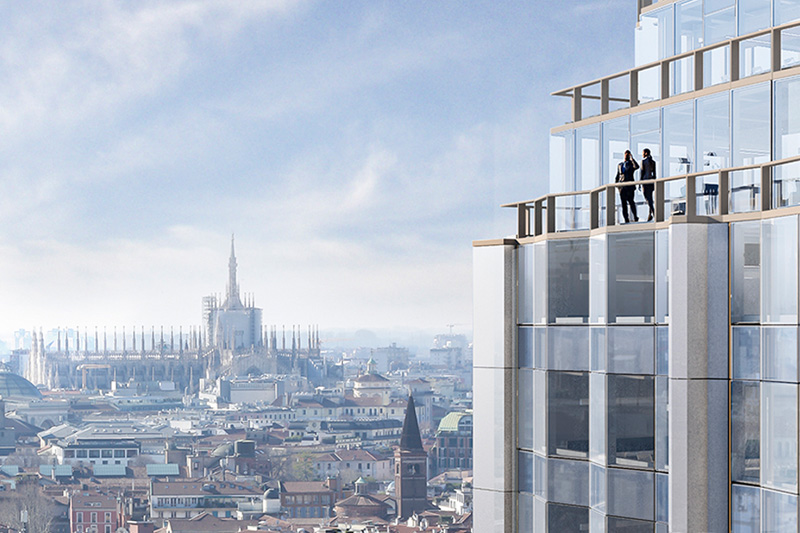In today's world we are increasingly aware of our relationship to the world around us, both our individual and collective impact on our environment and how we too are shaped by our surroundings.
We all have choices to make every day and it is crucial for us to prioritize sustainability in our personal and professional lives. This is particularly important in the built environment, where biophilic design, construction processes and the use of green materials, such as wood, can create buildings with the lowest possible environmental impact.
Italy, as demonstrated through developments such as IBM Studios Pavilion, or the Vertical Nest and Corso Como Place in Milan Porta Nuova, is leading the way in the adoption of advanced building techniques with minimal environmental impact.
The architect Lee Polisano, founder of PLP Architecture studio, explains how a sustainable approach and the use of wood are fundamental into modern architecture, opening new possibilities for energy savings, emission control and minimizing the whole supply chain's environmental impact.

Lee Polisano
In an era when the global population is rapidly growing, we are increasingly focused on our responsibility towards the environment and future generations. What does it mean for you to design cities in a sustainable way?
“We are using our natural resources at an unsustainable rate. Developed countries require more and more of the Earth's natural resources to sustain their economic and political status while emerging countries are doing the same in order to elevate their populations to a higher standard of health, education and shelter, thus creating a real “competition for resources”. Moreover, looking at the projected population increases in the next thirty years as well as the projected growth in our global mega cities, it is clear that we are facing big problems. We must advocate for both social change and greater responsibility when it comes to how we use the Earth's resources to build our future cities, using new technology to solve existing and emerging challenges to dramatically improve the environmental, social and economic role of buildings. We must react to solve existing and emerging challenges, make use of new technologies and to continuously introduce improvements that will have not only an environmental impact, but also a social and economic benefit, also with the support of new technologies.”
In this sense, many architects are returning to the use of green materials, like wood, that do not require much energy to be produced and that can be recycled and reused in the future. How do you evaluate the real potential and benefits of wood after years of steel and concrete buildings?
“We devote a considerable amount of research to the use of alternative, more sustainable materials such as wood in commercial and large-scale buildings. We see great possibilities. Wood has been a traditional building material for centuries. We need to focus on ways to manufacture and use these materials as well, but in a more environmentally friendly and less carbon consuming way.”
Basic wood is not resistant or strong enough to sustain very tall structures, which is why CLT (Cross Laminated Timber) has been conceived. Do you think CLT could be a valid alternative material through which to build skyscrapers and other kind of buildings comparable to steel and concrete ones? And what are the tangible benefits deriving from it?

Sky Central, London
“Laminating timber for the purpose of giving it greater strength and versatility in modern construction is not a new technology. CLT, however, has opened up new possibilities because its physical composition can be pre-engineered to address very specific structural challenges if needs be. We see major possibilities for using CLT as part of a composite construction, mixing it with steel or concrete for use in tall buildings. This is something we have been doing on many of our new buildings, for example our building for Sky TV in London.”
There is a concern that this material can be a fire hazard. Is an innovative wood as CLT, a cross-laminated solid wooden panel, actually more fire-resistant? And how can you compare its effect on wood vs the steel's one?
“It is possible to engineer CLT in a manner that gives it the sufficient fire resistance it needs for certain building applications. Every material has its failure point and this is a matter that needs to be considered carefully at the outset of each project. We should not assume that, just because it is made from wood, the material is subject to greater fire hazards or greater failures. This is not the case.”
The second, but not less important observation, concerns the topic of deforestation. Can wooden buildings actually be defined as sustainable, with regard to raw materials' recovery modes? In view of the growing use of wood in architecture, are there any recovery actions planned, which can at the same time fight the deforestation phenomenon, thus making sure that the entire production cycle is sustainable?
“Most wood used in modern construction is of the soft wood variety that grows quickly and lends itself to sustainable farming practices. Growing trees also captures carbon from the atmosphere. Deforestation globally is predominantly the result of damaging political policies that neglect to provide adequate protection and management of our forests and our environment, not a direct consequence of housebuilding.”
Oakwood Timber Tower is a research project made by your studio together with Cambridge University: we are talking about a 300 meters high wooden tower placed on top of one of London's iconic buildings, the Barbican. What are the goals you set yourselves in conceiving this ambitious project and what sustainability intents do you want to obtain with its realization?

Oakwood Timber Tower
“The objectives were very simple: to promote an awareness of the possibilities of using wood as a major structural material for large scale commercial projects and to advocate for greater research and development in the applications of this material.”
One of your last projects is Corso Como Place in Milan, which allows us to talk about another relevant topic for sustainable building: energy saving. Why the choice to adopt geothermal energy in this building?
“The Corso Como Place Project has actually allowed us to promote a great number of sustainable practices. First, we are reusing an existing building's structural frame, a good starting point for environmental impact. The project also employs composite construction techniques using CLT as part of the new building's structural systems, something which helps our sustainability objectives and pushes innovation, which is now needed throughout the industry. We have also incorporated numerous other sustainable applications to enable this project to achieve a positively reduced carbon footprint. For example, we are using the groundwater below the buildings as a thermal exchange. This is an incentive to promote innovation and a sustainable minimal carbon approach to buildings.”
In this regard, a more general conclusion: will Milan become a laboratory for new sustainable building design and processes? Do you see any differences to other European or world cities where you have worked?
“Definitely, the starting point of course is to have good, sound and achievable political policies that ensure the delivery of more sustainable solutions in the built environment. In addition to this we need to recognize that a sensitive approach to the environment is only one factor in making our cities better. Milan offers interesting possibilities. It has a unique combination of old and new and as such offers an approach to renewal as a form of sustainable development for the future. It is also a relatively compact city and, in this regard, offers good possibilities for more sustainable and smarter strategies in terms of transport and infrastructure: it has numerous opportunities within its central areas to redevelop brownfield industrial sites that can be rewoven into its urban fabric. These areas in particular offer us great potential to promote smart, sustainable, carbon negative solutions combined with a much more informed approach to promoting a fully inclusive society. I am optimistic.”
Cities of tomorrow seem to be finally ready to welcome the big challenge to sustainability thanks to the rediscovery of natural materials and the skillful work of architects able to value them. Thus Milan, from this point of view, proposes itself as the leading city of a tendency in expansion, a real laboratory of an architecture finally oriented to innovation and sustainability.






